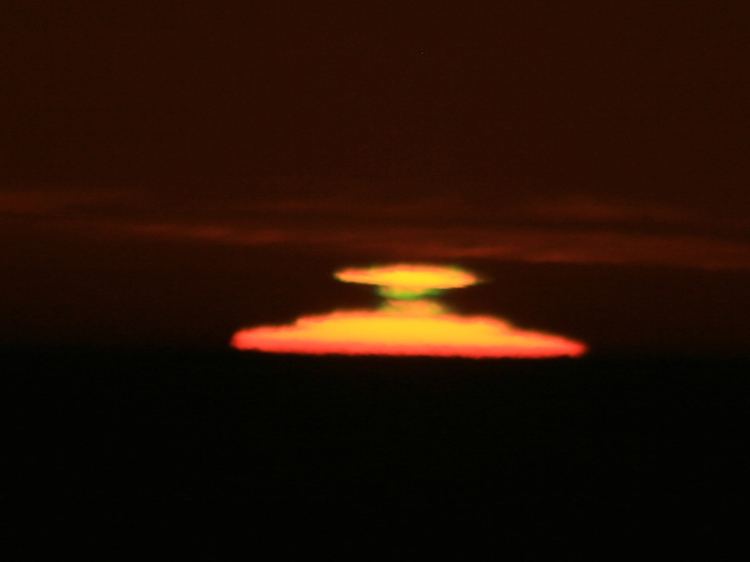 | ||
The Novaya Zemlya effect is a polar mirage caused by high refraction of sunlight between atmospheric thermoclines. The Novaya Zemlya effect will give the impression that the sun is rising earlier than it actually should (astronomically speaking), and depending on the meteorological situation, the effect will present the sun as a line or a square (which is sometimes referred to as the "rectangular sun"), made up of flattened hourglass shapes. The mirage requires rays of sunlight to have an inversion layer for hundreds of kilometres (at least 400 km), and depends on the inversion layer's temperature gradient. The sunlight must bend to the Earth's curvature at least 400 km to allow an elevation rise of 5 degrees for sight of the sun disk.
The first person to record the phenomenon was Gerrit de Veer, a member of Willem Barentsz's ill-fated third expedition into the north polar region in 1596–1597. Trapped by the ice, the party was forced to stay for the winter in a makeshift lodge on the archipelago of Novaya Zemlya and endure the polar night. On January 24, 1597, De Veer and another crew member claimed to have seen the Sun appear above the horizon, two full weeks prior to its calculated return. They were met with disbelief by the rest of the crew (who accused De Veer of having used the old Julian calendar instead of the Gregorian calendar introduced several years earlier), but on January 27 the Sun was seen by all "in his full roundnesse". For centuries the account was the source of skepticism, until in the 20th century the phenomenon was finally proven to be genuine.
